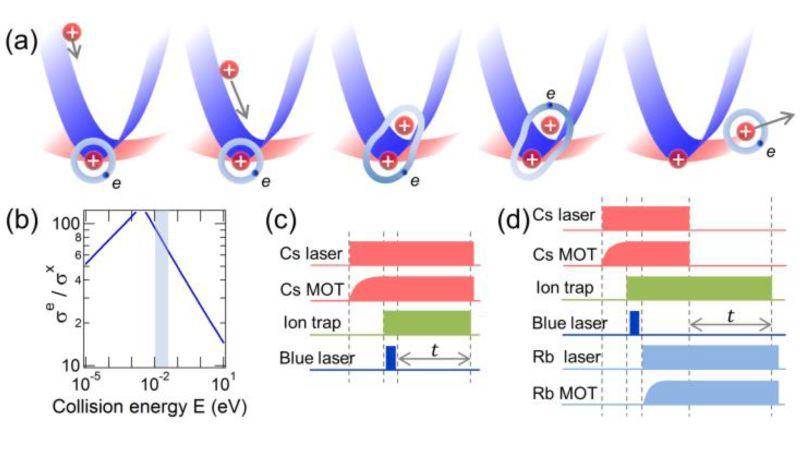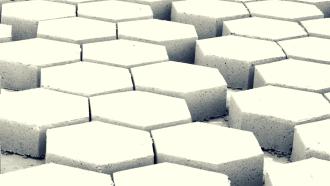
What do we mean when we say we wish to ‘cool’ something down? In day to day life, we simply mean, that its temperature be reduced or heat from the material should be removed. But what actually happens inside the material being cooled? How much heat can we remove from a material? Can we reach temperatures almost equal to absolute zero i.e. 0 Kelvin? We know that all matter is made up of large number of atoms which are in a state of incessant back and forth motion. This energy due to motion, or kinetic energy, is perceived as temperature. Cooling any material essentially means reducing the kinetic energy of the atoms in the material. When a system is sufficiently cold, the kinetic energy is negligible. In this case, the potential energy, which in dilute gases of atoms is very small, starts to determine interaction among the atoms, and so plays a major role in deciding the properties of the material. As this happens, very basic quantum properties which would otherwise be masked at higher temperatures reveal themselves. Cooling systems to such regimes is therefore of critical importance for many physics experiments, and often the biggest challenge to overcome.
Researchers Sourav Dutta and Sadiq Rangwala at the Raman Research Institute (RRI), Bengaluru have developed a novel method of cooling ions based on a phenomenon called resonant charge exchange (RCE). “What we demonstrate in this work from RRI is a novel and very efficient way of cooling ions by pick-pocketing the electron from the atom. New cooling mechanisms are very rare and have ramifications for future advances,” says Prof. Sadiq Rangwala, who is an author of this study. Their study, published as a Rapid Communication in the journal Physical Review A, was supported by DST, under the DST-INSPIRE Faculty Award, and Indo French Centre for the Promotion of Advanced Research (CEFIPRA).
As the atoms and ions in the gaseous phase tend to fly apart, even when very cold, chances of studying their interaction is greatly reduced. Thus if one wishes to study an atom-ion interaction for a longer time, some form of geometric confinement of the ions and atoms, in other words “trapping” is required. Usually, trapping is done using a combination of electric, magnetic and light fields. In the RRI experiments, this led to two, co-centred globes of trapped ions and atoms, millimetres in extent, suspended in very high vacuum at the centre of a steel experimental chamber with many windows.
Once the motion of the ion is restricted to the volume of the trap, the ion/atom are conventionally cooled by two methods. The first approach relies on “laser cooling” where, particles of light or photons from a laser are scattered by the atom/ion, undergoing multiple absorption and emission. The multiple collisions result in a recoil for each absorption and emission in a very specific way, leading to atom/ion cooling. The second approach relies on “sympathetic cooling”, where atoms which are already laser-cooled to a lower temperature collide with a higher temperature ion, thus reducing the ion’s kinetic energy. Over the course of multiple collisions, the ion loses most of its kinetic energy. However, both of these processes require multiple collisions since each collision only removes a fraction of the kinetic energy from the ion.
In contrast, in this new cooling method based on RCE, almost the entire kinetic energy of the ion is removed in a single collision between a colliding ion and the parent atom. “Cooling by resonant charge exchange is essentially a ‘swap cooling’ mechanism where an electron is transferred to a fast ion from a pre-cooled parent atom held essentially at rest. This results in an ion that is almost at rest. The mechanism works in homo-nuclear ion-atom systems i.e. when the ion and the atom are of same species, such as the Cesium-Cesium+ combination”, says Dr. Sourav Dutta, who was a DST-INSPIRE funded Faculty fellow at RRI. He is currently an Assistant Professor at the Department of Physics, IISER Bhopal. The swap cooling technique is found to be more efficient than other conventional methods, since a single collision produces a cold ion. Under similar experimental conditions, the per-collision cooling via RCE mechanism was found to be about 100 times higher than cooling via elastic collisions.
Experiments across the world are attempting to study ultracold collisions for the combined ion-atom system which has so far been elusive. According to the authors, this study underlines the importance of RCE as a mechanism in ion-atom systems and is an instrumental mechanism for ion-atom experiments in the ultracold regime.






